In the unpredictable landscape of global calamities, where nature’s fury or human-made disasters can strike at any moment, a consistent beacon of hope and resilience emerges the nurses. They stand at the frontline, bringing their expertise, compassion, and unwavering commitment to mitigate suffering and restore health. But what makes these healthcare heroes so indispensable during crises?
This blog delves into the multifaceted roles of nurses in disaster management, underscoring their significance in preparedness, response, and recovery. Nurses play a paramount role beyond conventional medical care, from conducting risk assessments to providing emotional support to traumatized victims. Join us as we explore the ten essential roles of nurses in navigating the complexities of disaster scenarios and championing the journey from chaos to recovery.
What Is Disaster Response Nursing?
Disaster response nursing is a specialized field in which nurses are trained to provide immediate care to individuals affected by various disasters. These nurses utilize their clinical skills, combined with additional training in disaster management, to address both the physical injuries and emotional trauma experienced by survivors. Their role becomes crucial in the aftermath of events that disrupt normal healthcare services or cause large-scale casualties.
The realm of disasters these nurses might respond to can be categorized as:
- Natural or Environmental Disasters: This encompasses events primarily caused by natural phenomena. Examples include tsunamis, wildfires, avalanches, and emerging challenges like climate-induced emergencies.
- Chemical Disasters: These events are associated with releasing or exposing harmful chemicals. Scenarios like oil spills or chemical plant explosions fall into this category.
- Biological Disasters: These outbreaks affect a large population, be it humans, animals, or plants, often in the form of epidemics or pandemics.
- Radiological or Nuclear Disasters: Events in this category involve releasing or exposing radioactive materials, commonly seen in accidents at nuclear power plants.
- Human-caused Disasters: These are events triggered by human actions, intentional or accidental, like wars, mass shootings, or large-scale vehicular accidents.
Disaster response nurses stand at the forefront of medical response when standard healthcare systems are overwhelmed or compromised, ensuring that affected individuals receive immediate and appropriate care.
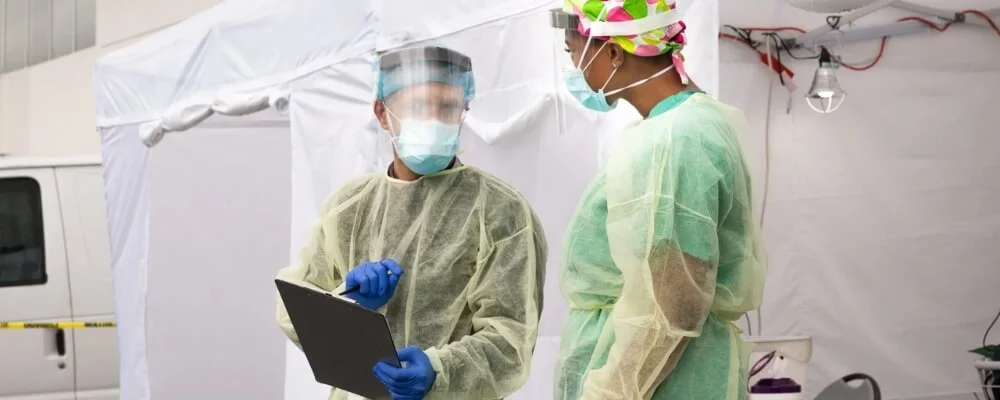
The Role Of Nurses in Disaster Management
Nurses are crucial in disaster management, spanning various stages of the disaster lifecycle – from prevention and preparedness to response and recovery. Their responsibilities in disaster management include the following:
1. Preparedness
Preparedness is a proactive phase where strategies are developed to ensure communities can respond to and recover from disasters effectively. Within this phase, nurses undergo specialized training tailored to various disaster situations, arming them with knowledge that ranges from specific medical interventions to broader, non-medical skills like search and rescue operations.
Furthermore, they serve as a crucial bridge to the community, educating individuals about potential risks they might face and the best ways to respond. This education often involves practical guidance on evacuation, basic first aid, and other life-saving techniques. Nurses are actively involved in disaster drills to ensure the healthcare community and the larger population are ready for potential disasters. These mock exercises serve to both test existing disaster response protocols and to identify areas for improvement.
2. Mitigation
Mitigation focuses on long-term strategies to reduce the impact of disasters. Nurses, with their on-ground experience and medical knowledge, are essential in assessing potential hazards within their communities. By working closely with community members, they can help develop and implement strategies that minimize these risks, ensuring the safety and health of residents. One of the crucial aspects of mitigation is resource management.
Nurses ensure that healthcare facilities, like hospitals, are always equipped with essential medicines, tools, and supplies. Their role ensures that medical establishments can provide immediate and sustained care without significant resource constraints in a disaster.
3. Response
When disaster strikes, an immediate and effective response can mean the difference between life and death. Nurses are often at the forefront of this response. One of their primary responsibilities is triage, where they assess the severity of patients’ injuries and prioritize medical attention, ensuring those in dire need receive care first. Beyond immediate medical care, like first aid or resuscitation, they also cater to victims’ emotional and psychological well-being.
Disaster trauma can be long-lasting, and nurses provide initial emotional support to help victims cope. Additionally, in the chaos of disaster scenarios, coordination becomes paramount. Nurses collaborate seamlessly with various emergency response teams, ensuring medical care integrates smoothly with broader rescue and relief efforts.
4. Recovery
The aftermath of a disaster is a challenging time for affected communities. In this recovery phase, nurses play an ongoing role. They monitor and provide care to survivors, ensuring that those who have sustained injuries continue to receive necessary treatments. Some victims might also be at risk of psychological disorders like post-traumatic stress disorder (PTSD), and nurses offer the required support.
Beyond individual care, they engage with entire communities, strengthening their resilience and readiness for future disasters. This involves bolstering mental health frameworks, setting up rehabilitation programs, and continuously reinforcing the importance of preparedness.
5. Leadership and Advocacy
Nurses don’t just provide care; they also serve as leaders and advocates in disaster management. With firsthand experience in disaster response, they are uniquely positioned to influence policy-making, ensuring that strategies and protocols are effective and grounded in reality. Many also engage in research, gathering invaluable data during disaster responses, which can be analyzed to refine and improve future strategies.
Outside the confines of healthcare facilities, nurses actively advocate for disaster preparedness. They work to raise awareness, promote risk reduction measures, and ensure that both healthcare professionals and the general public are equipped with the knowledge and resources they need to face and recover from disasters.
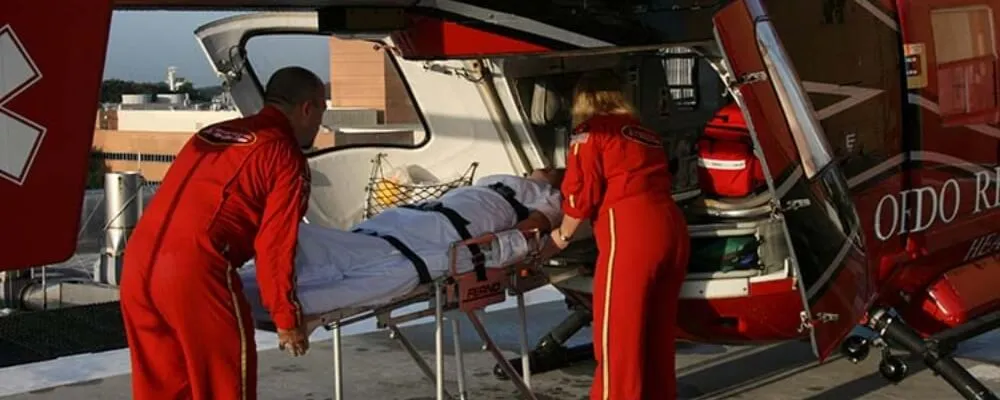
6. Documentation
Documentation is an integral aspect of disaster response. In the chaotic environment that often ensues post-disaster, nurses ensure that detailed records of every patient are meticulously maintained. This not only aids in subsequent medical follow-ups but also provides a clearer understanding of the scale and impact of the disaster. It helps medical professionals track patients’ progress and offers insights into the effectiveness of interventions.
Moreover, nurses are actively involved in collecting crucial data during disasters. They gather information on the nature and extent of injuries, the number of victims, and other pertinent details. This data is invaluable for researchers studying disaster impact and policymakers aiming to improve disaster preparedness and response.
7. Community Assessment
Understanding the state of a community post-disaster is essential for effective recovery. Nurses frequently take on the responsibility of evaluating affected communities by examining environmental and social dimensions.
They assess ongoing environmental hazards, shifts in social dynamics and immediate public health needs. A comprehensive picture of the community’s state can help better tailor recovery strategies, ensuring they address each disaster’s unique challenges and needs.
8. Health Promotion and Disease Prevention
In the aftermath of a disaster, communities often face heightened health risks. Disrupted sanitation systems, contaminated water sources, and overcrowded shelters can lead to disease outbreaks. Nurses play a pivotal role in mitigating these risks. They lead public health campaigns, educating community members on best practices in hygiene, the importance of consuming safe water, and recognizing early symptoms of diseases.
Additionally, with the potential of infectious disease outbreaks post-disaster, nurses are instrumental in organizing and executing vaccination drives. These efforts are critical in curbing the spread of diseases and safeguarding community health.
9. Capacity Building and Training
Preparedness is bolstered through continuous learning, and nurses are often at the forefront of these educational efforts. Experienced disaster response nurses bring their wealth of knowledge and experience to train their peers, ensuring the entire nursing staff is adequately prepared for future disaster scenarios. But their training efforts don’t stop at healthcare professionals.
Recognizing the importance of community resilience, nurses often conduct training sessions for community members, imparting skills like basic first aid, CPR, and other vital emergency response techniques. These efforts ensure medical professionals and the general public have the skills and knowledge to respond effectively when disasters strike.
10. Continuity of Care
For many patients, especially those with chronic conditions or undergoing prolonged treatments, continuity of care is paramount. Disasters can disrupt medical treatments, leading to complications or deteriorated health. With their patient-centric approach, nurses prioritize ensuring that these patients face minimal interruptions in their medical care.
Even when infrastructure is damaged, or resources are limited, nurses devise ways to ensure these patients continue receiving their medications and treatments. Their efforts ensure that individual patient needs are consistently met despite the overarching challenges presented by disasters.
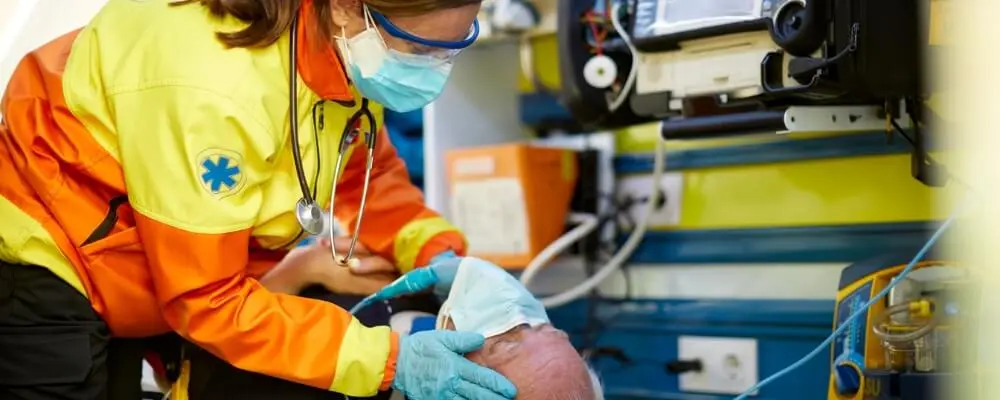
Unique Skills And Attributes That Make Nurses Valuable Assets
Nurses with diverse skill sets and multifaceted training are indispensable during disaster situations. Here’s a look at the unique skills and attributes that make them invaluable during such crises:
- Clinical Expertise: Nurses possess comprehensive knowledge in providing medical care. Their ability to assess, diagnose, and treat injuries or illnesses is pivotal in disaster scenarios where immediate medical attention is needed.
- Triage Skills: One of the primary roles of nurses during disasters is triage, where they quickly assess and categorize patients based on the severity of their injuries. This ensures that those with the most critical needs receive timely care.
- Emotional Support: Beyond their medical skills, nurses are trained to offer emotional and psychological support. In the aftermath of a disaster, addressing the emotional trauma of victims is just as crucial as tending to their physical wounds.
- Adaptability: Disaster situations are unpredictable. Nurses often operate in non-traditional settings or with limited resources. Their ability to adapt to changing scenarios and make the best use of available resources is invaluable.
- Team Collaboration: Nurses are accustomed to working in interdisciplinary teams. This skill becomes essential during disasters when collaboration between various emergency response entities is crucial.
- Communication Skills: Effective communication is vital during crises. Nurses can relay crucial information to patients, families, and other emergency personnel, ensuring everyone is informed and coordinated.
- Patient Advocacy: Nurses always prioritize the welfare of their patients. In a disaster setting, they ensure that every patient receives the best care regardless of their status or background.
- Ethical Decision-making: In high-pressure scenarios, tough decisions need to be made. Nurses adhere to a strict code of ethics, ensuring that even in the direst circumstances, they uphold the dignity and rights of their patients.
- Continuous Learning and Training: Many nurses undergo additional disaster preparedness and response training. This ensures they are always ready to respond to different types of disasters effectively.
- Cultural Sensitivity: Disasters can happen anywhere in the world. Nurses often bring an understanding of cultural nuances, ensuring that care is provided concerning affected individuals’ cultural and personal beliefs.
- Endurance and Resilience: The physically and emotionally demanding nature of disaster response requires exceptional endurance. Nurses are trained to maintain composure and provide care even in extended and exhausting situations.
Combining technical expertise, soft skills, and an unwavering commitment to patient care makes nurses one of the most valuable assets in any disaster management team.
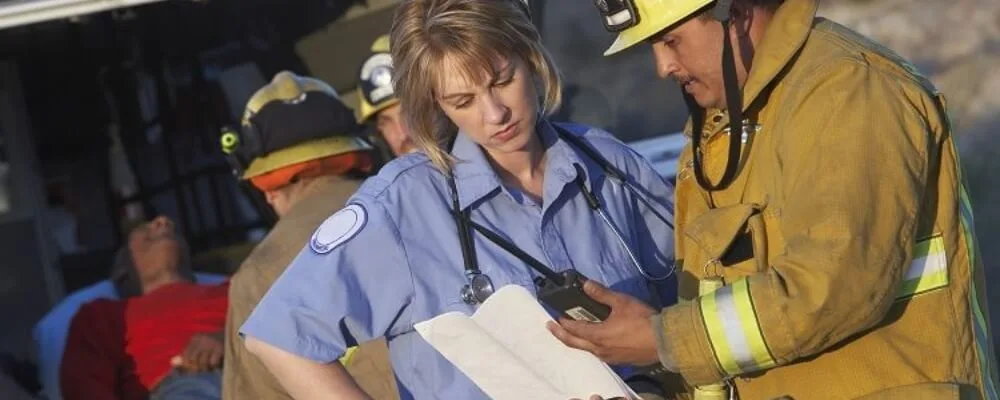
Success Stories of Nurses in Disaster Response
Nurses have consistently risen to the occasion throughout history, acting as beacons of hope and resilience during some of the most challenging times. Their contributions in the face of disasters highlight their dedication, adaptability, and skill.
1. Tackling the COVID-19 Crisis
The world was shaken by the unprecedented COVID-19 pandemic, which stretched healthcare systems to their limits. Amidst this chaos, nurses globally stood at the forefront, navigating the overwhelming wave of patients. Many hospitals found themselves operating beyond capacity, with corridors becoming makeshift wards.
Yet, nurses battled through the dire conditions, grappling with equipment scarcities and exhaustion, providing critical care to countless patients. Their role extended beyond immediate medical care: they became pillars of vaccine distribution. They took on the responsibility of guiding the public through the maze of information, emphasizing the importance of immunization.
2. The Response to Hurricane Katrina
2005’s Hurricane Katrina brought cataclysmic destruction, particularly to the Gulf Coast and New Orleans. Nurses emerged as the first line of defense for countless victims as the city grappled with prolonged flooding and systemic failures. Operating in provisional medical setups, with the bare essentials, nurses, alongside other aid workers, provided life-saving care to the displaced, injured, and traumatized.
While the broader government response faced criticism, the commendable service of the nursing community highlighted the importance of effective disaster preparedness, which possibly influenced improved responses in subsequent disasters like 2017’s Hurricane Harvey.
3. Healing Amidst Ruins: The Haiti Earthquake
When a devastating earthquake hit Haiti in 2010, it wasn’t just the immediate impact of the disaster that was concerning but also the long-term implications for the already fragile healthcare infrastructure. The country faced a major medical crisis, with transportation routes destroyed and resources dwindling. Yet, international nurses and medical professionals surged into the country, offering their expertise.
Nurses showcased their resourcefulness in the harshest conditions, lacking even basic amenities. They crafted medical tools from available materials and provided care under rudimentary circumstances. Their tireless efforts ensured that countless lives were saved despite the overwhelming odds, and many injured individuals received the care they desperately needed.
4. Bravery in the Face of Nepal’s Quake
2015, a massive earthquake devastated Nepal, claiming nearly 9,000 lives and leaving countless more injured or homeless. Amidst the rubble and the chaos, nurses, both local and from international aid agencies, arrived at the scene. They began treating wounds and fractures without waiting for proper tents or facilities and providing essential medication.
As aftershocks continued to rock the nation, these nurses set up makeshift clinics and provided care, ensuring that secondary infections and complications were minimized. Their immediate response and continuous service during the aftermath played a crucial role in Nepal’s road to recovery.
5. Battling the Ebola Outbreak
The Ebola outbreak, primarily in West Africa between 2014 and 2016, was one of the deadliest virus epidemics in recent history. Local healthcare systems were overwhelmed in countries like Sierra Leone, Liberia, and Guinea. However, nurses from within these countries and around the world stepped forward to combat the crisis.
Working in high-risk environments wearing restrictive PPE in high temperatures, nurses provided care and educated communities about transmission prevention. Their pivotal role cannot be understated; nurses were instrumental in containment strategies, contact tracing, and community engagement that ultimately controlled the epidemic.
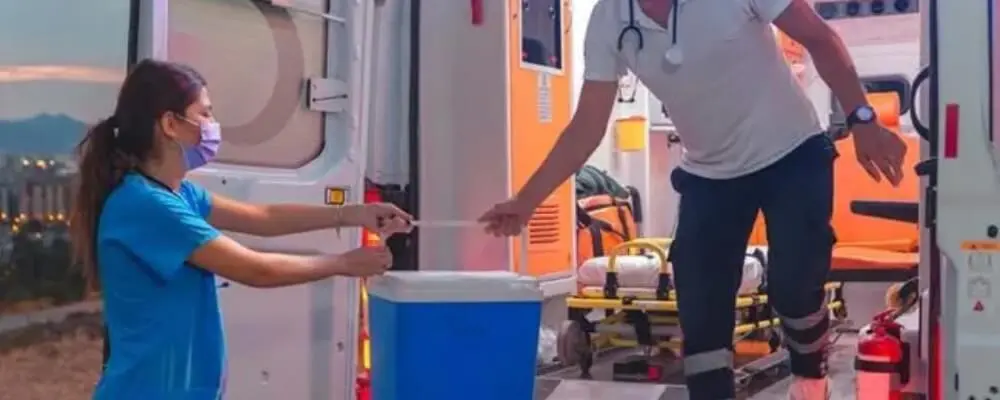
6. Bushfires in Australia
The 2019-2020 bushfires in Australia were catastrophic, with millions of acres burned, thousands of homes destroyed, and many lives lost. Nurses in affected areas and those who traveled from other regions were instrumental in treating burn victims’ smoke inhalation cases and providing trauma counseling. They worked in emergency shelters, ensuring evacuees received medical attention and support.
Furthermore, they were pivotal in outreach programs, checking on isolated residents in rural areas and ensuring their health and safety post-fire events.
7. Floods in Pakistan
2010 saw devastating floods sweep across Pakistan, affecting over 20 million people. Many were left without shelter, clean water, or access to medical care. Amidst this, nurses from Pakistan and international aid groups were the frontline warriors. Facing waterborne diseases, skin infections, and the threat of potential epidemics, they provided immediate relief and care.
Mobile clinics were established, with nurses navigating inundated areas to ensure that even the most remote communities received help. Their continuous efforts mitigated potential outbreaks and ensured the well-being of countless individuals.
These stories, among many others, epitomize nurses’ unwavering spirit, dedication, and resilience globally. Whether battling natural disasters or health crises, their commitment to saving lives and alleviating suffering remains a beacon of hope for humanity.
Conclusion
In the vast tapestry of disaster management, the threads woven by nurses are vibrant and vital. Their roles, from preparatory actions to recovery initiatives, encapsulate the essence of humanity’s resilience and compassion in the face of adversity. Through the ten essential roles discussed, we gain a panoramic view of how nurses are not just caregivers but also educators, advocates, leaders, and much more. Their contributions are the bedrock that supports communities during their most vulnerable times, bridging the gap between despair and hope.
As we reflect on the multifaceted impact of nurses in disaster management, it becomes evident that their presence, expertise, and dedication are indispensable. In the relentless dance of chaos that disasters often bring, nurses stand as the unwavering pillars guiding us toward safety, recovery, and, ultimately, a brighter tomorrow.

